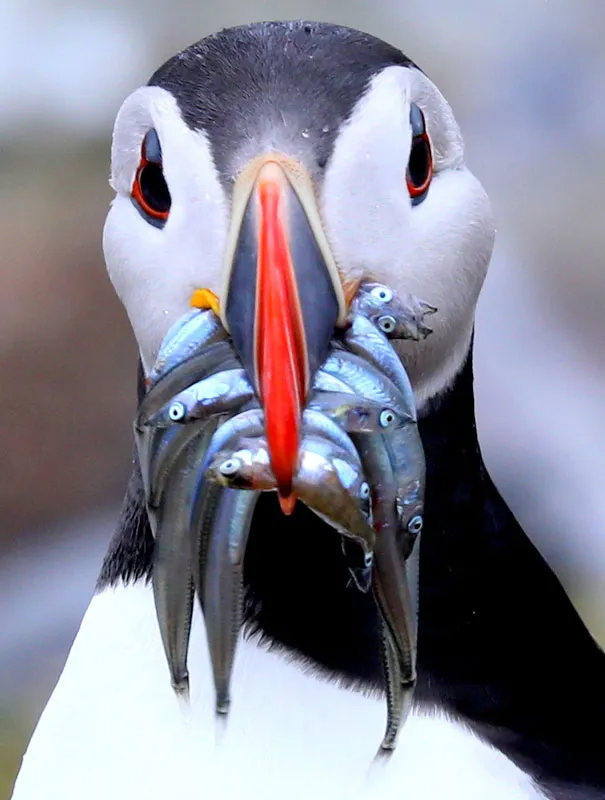‘Puffin Project’ was launched by the RSPB earlier this year in response to the plummeting puffin numbers at some colonies, which experts warn could see half the global population disappear within the next 40 years.
The public were asked to become ‘Puffarazzi’ and share photographs of puffins feeding their young to help scientists build a better picture of what these seabirds are feeding their chicks, known as pufflings.
More than 1400 photographs were analysed, helping scientists identify areas where puffins are struggling to find the large, nutritious fish needed to support their chicks.

Early results suggest that the diet of puffins vary significantly around the UK - in the northern isles of Orkney and Shetland, where serious puffin declines have been seen, puffins appear to be consistently finding smaller prey compared to most other colonies.
Traditionally puffins feed on a mixture of fish, with nutritious sandeels making up a high proportion of their diet. Photos from puffin colonies in northwest Scotland show that sandeels are making up about half of their diet compared to the two-thirds at colonies in southern Scotland, northern England and Wales.

Ellie Owen, RSPB Conservation Scientist leading the Project Puffin team, said: “Puffins colourful bills and unique eye markings make them a favourite bird to photograph. The huge response to our appeal for photos has been incredible, with more than a thousand submitted. It’s taken the team of staff and volunteers more than three months to go through them all.
“For a young puffin waiting in its burrow, its life hangs on whether its parents return with enough food. An abundant supply of large, nutritious fish such as sandeels, sprats and herrings is key to healthy colonies. The public response means we’re getting data on a scale that we’ve never been able to collect before; showing what puffins are managing to find to feed their chicks around our coastline. The next stage of the project is to look more closely at the diet of puffins compared to their breeding success to pin down what part diet plays in the decline of some puffins.”
From May to August, 602 people joined the Puffarazzi, gathering 1402 photos of puffins taking food to their chicks. Pictures came from almost 40 colonies around the UK, including those on the Farne Islands, Skomer and the Isle of May.
The project is supported by Heritage Lottery Fund Scotland thanks to money raised by National Lottery players. To see more of the pictures and to learn about the RSPB’s Project Puffin, visit www.rspb.org.uk/projectpuffin

